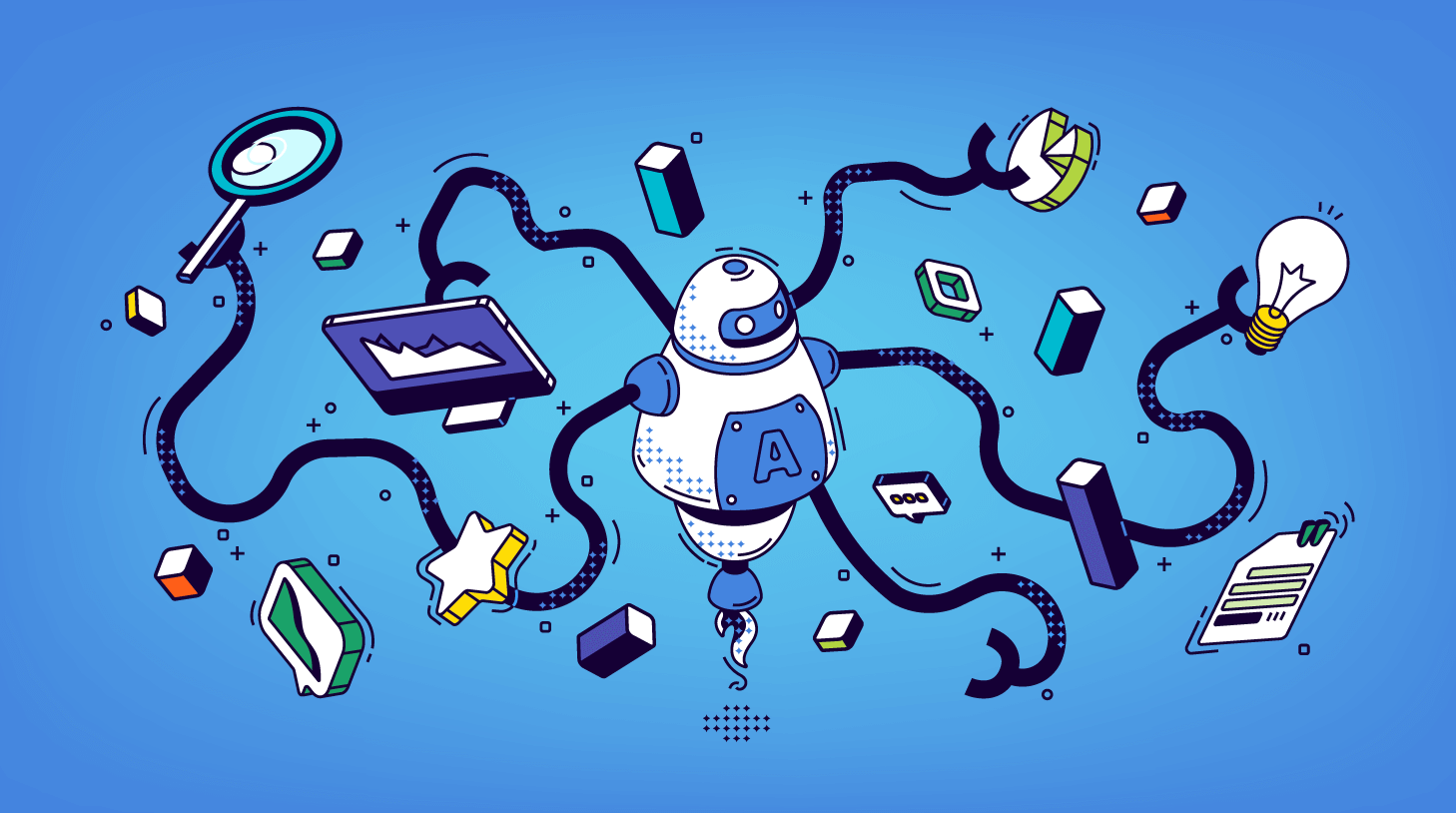11 benefits to scaling and automating your recruiting process
Automated recruiting processes offer numerous benefits, including time and cost savings, the ability to screen more applicants, reduced errors, and improved candidate communication. It also allows for easy scaling of the hiring process, promotes equitable hiring, simplifies compliance, optimizes hiring processes, quickens offer letters, and eases onboarding.

What does automated recruiting mean? Automated recruiting involves streamlining the hiring process by using automation to organize and manage the manual and administrative tasks associated with talent acquisition.
If you have doubts about trusting artificial intelligence with such a nuanced and human-centric series of decisions — have no fear. Recruitment automation doesn’t replace the insight, experience, and knowledge of a human resources professional; it simply automates the tedious but necessary actions that are an important part of the hiring process. An applicant tracking system with recruiting technology ultimately improves the candidate experience, reduces time-to-hire, and helps attract, manage, and secure top talent.
Automated recruiting includes:
Now that we’ve established that automated recruiting isn’t a proposal to replace your hiring manager with a robot, let’s discuss how it can improve the overall hiring process:
1. Posting jobs to job boards
The actual act of posting jobs to job boards is a mundane — but essential — task. Advertising open positions is the first step to reaching job seekers, but writing up a job description and posting it to numerous job sites is a time-intensive chore. An applicant tracking system streamlines the process by automatically posting your job listing to relevant career sites, including LinkedIn, Indeed, Glassdoor, and others.
2. Tracking your applicants
Although an abundance of qualified candidates is a good “problem” to have, it can be a challenge to track and manage applicants throughout the process. Recruiting software can assist with candidate relationship management and improve candidate engagement by automating aspects of communication, including setting up action triggers for each stage of the hiring process, scheduling emails and interviews, using chatbots to answer frequently asked questions in real time, and identifying and reaching out to passive candidates.
3. Scheduling interviews
The interview process is critical in identifying top candidates, but interview scheduling requires a lot of back and forth communication between multiple parties and can quickly feel disorganized. Offering candidates the option to self-schedule their in-person, phone, or video interviews is one of many recruitment automation tools that makes the hiring process easier for everyone involved.
4. Email communications
Although the hiring process is typically viewed as the applicant’s opportunity to impress a potential employer, the best candidates are also assessing whether or not your company is the right fit for them. Prompt communication throughout the process demonstrates that you respect the time, interest, and effort of applicants. Automated recruiting tools can schedule emails and follow-ups throughout the process, from introduction to offer letter.
5. Approval workflows
Hiring decisions should be based on finding the right person for the job — not the person who approves the job requisition. Algorithms can’t replace the human input and perspective that facilitates finding the perfect fit. However, using automated recruiting tools to implement a standard approval workflow, or to create a custom one, ensures that stakeholders are automatically notified about next steps and action items throughout the process, so that everyone has all necessary information and is included in their part of the decision-making process.
6. Managing hiring plan
Talent acquisition has many different stages. Plan the hiring process, track progress, manage your budget, and keep stakeholders aligned along the way by using automation technology to establish approval workflows and capture requisitions so that no one has to chase down approval or inquire about timing or budget.
A comprehensive hiring plan paired with the appropriate tools makes hiring new talent a seamless experience.
11 benefits to automating these recruiting processes
Delegating administrative or manual tasks to automated recruiting software has a myriad of benefits, including the following:
1. Recruiters save time to focus on personal touches
A competitive job market makes recruiting top talent even more challenging. Streamlining the tasks involved in the recruiting and hiring workflow allows recruiters more time to connect with potential candidates on a more personal level, creating a relationship that reflects positively on the employer brand.
2. HR departments reduce their bottom line
Allocate funds where they matter the most by automating time-intensive tasks. Assigning actions to automated recruiting tools improves productivity by allowing your hiring professionals to focus their time on using the skills, experience, and expertise that is truly valuable to your business.
3. More applicants are screened, so better applicants are chosen
Pre-screening, resume screening, background checks, and talent intelligence tools help you develop a more in-depth candidate profile for each applicant. The ability to screen applicants efficiently and effectively helps ensure that good candidates don’t go unnoticed in a stack of cover letters and resumes.
4. Fewer items slip through the cracks
Between the many steps of the hiring process and the number of people involved, losing a resume, missing an email, forgetting a background check, or scheduling an interview for the wrong time are easy mistakes to make that could have a significant impact on your ability to hire the ideal candidate.
5. Less ‘ghosting’ of candidates
Looking for a new job can be frustrating, and is an experience fraught with anxiety and hope. Make the process easier and respect the effort and interest of applicants by communicating clearly and promptly. Automated emails help make sure that candidates are kept in the loop.
6. Scale the hiring process up and down easily
Hiring needs vary over time. Streamlining the hiring process by incorporating an applicant tracking system makes it easier to go from filling one job opening to sourcing candidates for multiple open positions without having to adjust your hiring staff or payroll. If your hiring needs change over time, you still continue to have the tools available to screen candidates and find new hires.
7. More equitable hiring
Reduce the chances of unconscious bias while screening candidates through the use of automation. Recruiting technology can monitor demographics by stage and adapt accordingly with more accuracy and efficiency to improve diversity.
8. Easier compliance
Managing compliance is critical and complicated, especially as data privacy and employment regulations are implemented or changed. Automated recruiting tools and reports make it easier to adhere to local, national, and international laws, including GDPR and EEOC/OFCCP.
9. More optimized hiring processes
Metrics matter. The data that is automatically collected during each stage of the hiring process provides valuable insight and information. Improve your hiring practices, and potentially the talent pool that you attract, by analyzing and optimizing your efforts based on quantifiable data.
10. Quicker offer letter
Timely job offers are crucial when applicants get two to three offers at once. Automated recruiting technology can automate job offer emails, help secure quicker sign-offs from executives, and allows you to execute contracts and signatures online.
11. Easier onboarding – better new employee experience
Automated recruiting tools continue to be helpful even after the hiring process is complete. Data collected during hiring can migrate to a Human Resource Information System (HRIS), such as Bamboo. Seamless software integration helps turn your new hire into a team member in no time.
How Workable can automate your recruiting process
From job posting to onboarding, Workable helps optimize every step of the hiring process. Automate repetitive tasks and emails, create, track, and manage your hiring plan, build requisition and approval workflows, and seal the deal more efficiently with built-in offer letters and signature capabilities.
Workable’s automated recruiting tools can help organize and manage the talent acquisition process, while also collecting and reporting necessary data and moving new hires through the onboarding process with ease.
Empower your hiring professionals to focus their time and attention on finding the best candidate with an applicant tracking system designed to support success.
Find and hire the right person for every job — faster. Learn more about Workable’s automated actions.
Frequently asked questions
- What is automated recruiting?
- Automated recruiting refers to the use of technology to streamline and optimize the hiring process. It includes tasks such as posting jobs to job boards, tracking applicants, scheduling interviews, managing email communications, and implementing approval workflows.
- What are the benefits of automated recruiting?
- Automated recruiting saves time, reduces costs, allows for screening of more applicants, minimizes errors, reduces candidate 'ghosting', scales the hiring process, promotes equitable hiring, simplifies compliance, optimizes hiring processes, quickens offer letters, and eases onboarding.
- How does automated recruiting promote equitable hiring?
- Automated recruiting can help reduce unconscious bias in the screening process. Recruiting technology can monitor demographics at each stage and adapt accordingly, improving diversity and promoting a more equitable hiring process.
- How does automated recruiting assist with compliance?
- Compliance management is critical and complex, especially with changing data privacy and employment regulations. Automated recruiting tools and reports simplify adherence to local, national, and international laws, including GDPR and EEOC/OFCCP.
- How does automated recruiting improve the onboarding process?
- Automated recruiting tools continue to be useful even after hiring. Data collected during hiring can migrate to a Human Resource Information System (HRIS), facilitating a seamless onboarding process and enhancing the new employee experience.


